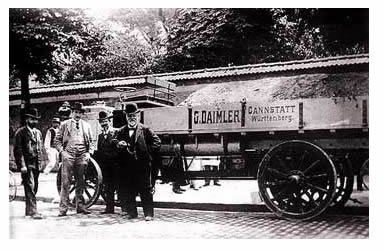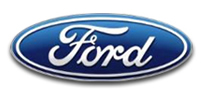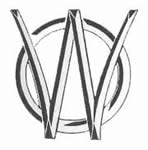 All Classic Ads Vintage Collection - Truck related ads All Classic Ads Vintage Collection - Truck related ads
Fargo Trucks • Ford Trucks • Willy Overland Trucks

The first motor truck was built in 1896 by the German automotive pioneer Gottlieb Daimler. Daimler's truck had a four-horsepower engine and a belt drive with two forward speeds and one reverse. It was the first pickup truck. Daimler also produced the world's first motorcycle in 1885 and the first taxi in 1897.
|
|
We have Fargo, International, Willys, Overland and other Truck ads in stock. Email us for prices and requests . The inventory list will be added to the site soon.
|
 (Picture on the left) On the 18th of February 1896 Gottlieb Daimler recieved an order from London for a truck built to transport merhandise for British Motors Syndicate Ltd. (Picture on the left) On the 18th of February 1896 Gottlieb Daimler recieved an order from London for a truck built to transport merhandise for British Motors Syndicate Ltd.
1900 - Ford
Henry Ford builds his third vehicle – a truck.
1917
Ford introduces the Model T One-Ton truck chassis, its first chassis specifically built for trucks.
1925
The first factory-assembled pickup debuts, with a price tag of $281. It featured a cargo box, adjustable tailgate, four stake pockets and heavyduty rear springs.
1918 - Chevrolet
The first Chevrolet trucks went on sale in 1918, the same year that the Chevrolet Motor Company became part of GM. Chevrolet's famous series 490 auto was also new in 1918. This model was designed to compete directly with Ford's Model T. The 490 designation was based on the price the car was to sell for which was also the amount a Model T had been selling for. Mr. Ford immediately lowered the price of a Model T after the Series 490 was announced.
The first Chevrolet truck was the Model 490 Light Delivery. The half-ton rated 490 Light Delivery was a chassis cowl only based on the 490 auto. A chassis cowl included the chassis with engine, transmission and the front sheet metal which comprised the hood, front fenders, grille and headlights. Its instrument panel, steering wheel, foot pedals and shift lever were exactly the same as the cars.
1921 - Dodge
The Dodge brothers (John and Horace) got their start making parts for Ford and other makers. From the first Dodge Brothers automobile in 1914, the Dodge brothers' durability and quality earned their company a strong reputation and good sales. They did not build an actual truck until World War I, though, and that was a panel van, not a pickup - with a half-ton capacity and a 35 horsepower - gross, not net! - four cylinder engine! But by 1921, after the death of both Dodge brothers, Graham Brothers started selling 1.5 ton pickups through Dodge dealers; it had Graham bodies and Dodge parts. A one ton model showed up later in the 1920s, still powered by that same four cylinder engine, and Dodge Brothers bought a controlling interest in Graham Brothers in 1925, picking up the rest in 1926.
In 1928, Chrysler acquired the Dodge Brothers company, just after launched its DeSoto and Fargo truck brands, both of which competed directly with Dodge Brothers. Fargo trucks sold in the US from 1928 through 1930, and continued for decades as an export brand; they had nothing in common with Dodge trucks, sharing parts with Plymouth and DeSoto instead.
Dodge introduced a half-ton pickup for 1929 just after its acquisition by Chrysler, the last "oriiginal" Dodge Brothers-designed truck. For this year, three engines were available - two Dodge engines with six cylinders (63 and 78 hp), and a Maxwell four cylinder that was substantially smaller than the Dodge engine, but produced more power (45 hp).
The trucks had four wheel hydraulic brakes, a significant safety feature by no means standard on competing pickups, but standard across Chrysler Corporation vehicles.
Fargo trucks are one of the many examples of Chrysler's unique style. Though the brand has been used worldwide, it originally started outside of Chrysler — in 1913, at the Fargo Motor Car Company of Chicago, which sold a line of Fargo trucks. While Fargo Motor Car closed up shop in 1922, the name was destined to spread around the world.
In the 1928 model year, with Plymouth and DeSoto doing well, the new Chrysler Corporation created the Fargo Motor Corporation to build and sell commercial trucks.
1921 - Fargo
How the Fargo name was chosen is an open question. The name had the obvious appeal of Old West adventure and reliable transportation. The name also held a likely attraction to J.N. Fields, Chrysler Sales V.P. and President of DeSoto. Walter Chrysler called him a "good-looking fellow and a great salesman" who never learned to take “no” for an answer. Joe Fields had started his professional life selling farm machinery in (you guessed it) Fargo, North Dakota. Perhaps the initial idea was not Fields’, but once suggested, he probably stuck to it until the letters were on the grille.
Fargo began producing two full lines of commercial vehicles. The lighter vehicle, called the "Packet," was based on the Plymouth Model Q. The larger "Clipper" came on the Chrysler 65 chassis. Both used a mixture of Plymouth, DeSoto, and Chrysler parts.
In 1930, the Plymouth four cylinder engine of the Packet was replaced by the DeSoto six, and a one-tone "Freighter" line was also introduced. They used parts from a variety of Chrysler Corporation vehicles, such as a Plymouth four cylinder engine and, later, a DeSoto six. Eventually, Fargo had a wide range of vehicles, including dump trucks.
Despite an impressive array of models, from light express and delivery vehicles to heavy dump trucks and semi tractors, Fargo seemed doomed from the start. Almost after Chrysler decided to create the Fargo Motor Corporation, Chrysler's on-again-off-again deal to buy the Dodge Brothers Company was very much "on." With the purchase of Dodge, Chrysler not only grew several times its size, but it now had three truck lines: Fargo, Dodge Brothers (light trucks), and Graham Brothers Trucks, medium and heavy duty lines exclusively built and marketed by Dodge Brothers since 1921.
AVAILABLE TRUCK ADS BY DATE AND CATEGORY
1900 - 1919 |
1940 - 1949 |
1970 - 1979 |
|
|
|
1920 - 1929 |
1950 - 1959 |
1980 - 1989 |
|
|
|
1930 - 1939 |
1960 - 1969 |
1990 - 1999 |
|
|
|
FARGO Trucks

Though the Fargo brand was used worldwide, it started outside of Chrysler — with the Fargo Motor Car Company of Chicago, which sold a line of Fargo trucks from 1913 to 1922.
For the 1928 model year, with Plymouth and DeSoto doing well, Chrysler created the Fargo Motor Corporation to build and sell commercial trucks.
The Fargo name had the obvious appeal of Old West adventure and reliable transportation. The name also held a likely attraction to J.N. Fields, Chrysler Sales V.P. and President of DeSoto. Walter Chrysler called him a "good-looking fellow and a great salesman" who never learned to take “no” for an answer. Joe Fields had started his professional life selling farm machinery in (you guessed it) Fargo, North Dakota. Perhaps the initial idea was not Fields’, but once suggested, he probably stuck to it until the letters were on the grille.
→ click here for more information on the Fargo Trucks
Ford Trucks

The first motor truck was built in 1896 by the German automotive pioneer Gottlieb Daimler. Daimler's truck had a four-horsepower engine and a belt drive with two forward speeds and one reverse. It was the first pickup truck. Daimler also produced the world's first motorcycle in 1885 and the first taxi in 1897.
1900 - Ford
Henry Ford builds his third vehicle – a truck.
1917
Ford introduces the Model T One-Ton truck chassis, its first chassis specifically built for trucks.
1925
The first factory-assembled pickup debuts, with a price tag of $281. It featured a cargo box, adjustable tailgate, four stake pockets and heavyduty rear springs.
→ click here for more information on Ford Trucks
Willys Overland Trucks

John North Willys ran a variety of retail businesses in upstate New York in the 1890s. Toward the end of that decade he purchased a successful sporting goods store in Elmira and prospered, benefiting financially from the bicycle craze. Shortly after 1900, George Pierce—a Buffalo bicycle entrepreneur and father of the Pierce Arrow—developed a cycle car. This was a four-wheel, bicycle-like vehicle powered by a small gasoline engine. Willys successfully sold these in Elmira and concluded that there was a fortune to be made in the automobile industry. He began selling cars in Elmira in considerable numbers. He selected an Indianapolis-produced make known as American for his expensive car and then sought to sell a lower-priced car.
→ click here for more information on Willy Overland Trucks |



